Charlie Lewis, der Co-Autor des legendären Bildbandes „Dampf am Kap“, welcher sicher nicht nur den Herausgeber von FERN-Express massiv beeindruckt und beeinflusst hat, öffnet sein Archiv und gibt einen Blick frei, 30 Jahre zurück.
Soul of
A
Railway ©
In common with most countries, South Africa’s railway today is a shadow of what it once was. The situation here has been made worse by corrupt, inept and clueless “Business Managers” from outside the industry whose positions (not to mention their outrageous salaries) stem from the misguided belief that “anyone can run a railway”. We have something to show these whiz kids: the golden age of South Africa’s railways was when everyone from lowliest platelayer to the Minister of Railways came through the ranks. In this series, Les and I will attempt to show how excellent the SAR was, while at the same time keeping facts as historically accurate as we can.
The General Appendix to the Working Time Books (WTBs) identified several categories of train. Although there are many anomalies we have adapted them for use in this series:
- The White Train: the State President’s train, discontinued in 1975
- Express Passenger: the Blue Train and the Drakensberg Express
- Fast Passenger: Trans Karoo, Orange Express, Trans Natal plus many others
- Passenger, international (classified “fast passenger” in WTBs)
- Passenger, main line
- Passenger, local and outer suburban
- Passenger, suburban
- Mixed
- Fast Goods
- Goods
- Pick-up and Transship
- Block Loads
- Special trains (railtours, departmental workings etc)
Examples of each category will be posted then we’ll move to the systems and show them at work on as many lines as possible. Here follows a brief description of each photo:
- The White Train in charge of an immaculate 3235 cl 23, driver Kallie Ludick but unfortunately I’ve lost the fireman’s name. At this time the train was quite different to that used by King George VI and family when they toured the Union of South Africa in 1947, although some vehicles did come from the Royal consist. The two vans are ex DZs converted to carry bullion and later adapted for the Presidential Daimlers. The retirement of President Jim Fouche in 1975 marked the end of Presidential travel by train as Oom Jim’s successor, the disastrous President Diedericks, was not interested in visiting his “subjects” by train.
- 2-up, the southbound Blue Train on the 1-in-100 towards Spytfontein in December 1968. This beautiful train was built in England in 1939 by Metro-Cammell. In 1958 its classic clerestory roofline was spoilt by the introduction new twin diners from Wegmann in Germany and later, in 1963, lounge cars from Union Carriage. Due to questions in Parliament the original clerestory diners were restored to Blue Train service c 1965 but not the lounge cars. At an overall average speed of 38 mph for the 956 miles No’s 1-down and 2-up provided the fastest service between Johannesburg and Cape Town.
- After the old Blue Train was replaced by the far less elegant 1972 version, one of the Blue Train sets was repainted in a dark green livery and placed in service between Johannesburg and Durban as the Drakensberg Express. The second set was completely stripped of its mahogany and walnut paneling to be fitted out with light wood-grain Melamine panels imported from Canada. This second set (brainchild of the then General Manager, Kobus Loubser) was repainted a pale green and replaced the original dark green set in Drakensberg Express service. The route was then extended to include the long haul from Durban to Cape Town via Bloemfontein – returning the same way and ultimately back to Johannesburg. The Drakensberg ought to have been more successful but it was saddled with the same daft schedule as the Orange Express that required both trains to run through the most scenic parts of Natal as well as Hex River Pass at night. Within three years the Durban-Cape Town leg was terminated leaving Durban-Jo’burg to carry on a while longer before it too succumbed.
- 15F on 199-down hitting her stride through Roodekop in 1959. On SAR the term “Fast Passenger” was a euphemism. Occasionally it meant trains with intermediate start to stop timings exceeding 45mph. Among the few consistently in this category were 192-up and 199-down (from 1960, the “Trans-Natal”). Note the traditional SAR all-clerestory long-distance rake consisting of standard day/sleeper main line stock, dining saloon, kitchen car and baggage/guards van which also conveyed the mails. This format had been quite stable for more than 60 years but things were about to change with the introduction of Commonwealth (Australia)-designed elliptical roofed stock from Union Carriage from 1960.
- Coming down the scale, the Orange Express (209-down eastbound and 212-up westbound) took 41 hours to do 1,300 miles between Cape Town and Durban at an overall average of 31,7 mph although there were faster point-to-point timings (SAR wasted a lot of time in stations and engine-servicing stops). As compensation, up until 1970 there were 700 miles of steam haulage with free smoke, cinders and grime (all the windows opened fully) so who was complaining. As late as 1980 there were still 250 miles of steam between De Aar and Bloemfontein. On the day this picture was made, 3231 was heading into a violent highveld storm that resulted in the main line being washed away soon after the train had passed Houtenbeck.
- I wish it were possible to convey the sensation of immense unstoppable power as No 3537 surged towards Spytfontein with the up Trans Karoo. As you can see, it was going too fast for my shutter speed (quite unintended) – I guess close to 70mph and this with 20 saloons + two motor-car carriers – about 800 tons. From 1972 the maximum permissible speed for the new diesel-hauled Blue Train had been raised to 68mph (110kmh) but steam drivers immediately made it a matter of pride to run up to this speed (and higher!) when making up time.
- Lowest in pecking order surely were No’s 51 and 52 between Cape Town and Port Elizabeth. The regular (SaO) once-weekly service was discontinued wef the 1970 timetable but holiday workings continued for another year, hence this shot of 51-down approaching Jubilee in September 1971. The 675 miles were scheduled to take 29,5 hours at an overall average of 23mph. I kid you not, it was classified “fast passenger” in the WTBs!
- The next category was “international passenger” (WTBs just called them “fast passenger” excepting the Maseru train for which even SAR wouldn’t have dared to use the “fast” label). 105-down and 66-up were the Cape mails that served Rhodesia. The majestic Keeromsberg looms in the background of this view of the up Rhodesia Mail approaching Worcester and the last leg of its 1,355 mile journey from Bulawayo.
- Representing the main-line passenger category is this superb SAR official photo of 7-down in Beaufort West kindly lent by Peter Stow. Showing passengers stretching their legs during a typical leisurely engine change (in this case from a class 23 to a 15E) this quite captures the essence of SAR train travel. Note the “Blompot” (railway policeman) with his smart uniform and white pith helmet, the majestic old station building and signal cabin. The goods sidings are crammed with traffic as all Up trains had to be remarshalled for the change in ruling grade southwards from Beaufort West (from 1-in-80 to 1-in-66), for which purpose the cl 3R in the far left background was employed 24/7. Also in the background is a northbound freight just arrived from Touws River with a cl 23 and what looks like a caboose – which gives rise to an intriguing question: is it possible that this is in fact the CME’s dynamometer car? This would date the photo to around 1949/50 when tests icw the designs for class 25 were under way.
- Les’s photo of an archetypal outer-suburban formation, standard steam suburban coaches interspersed with hand-me-down main-line stock. The locomotive is one of Hendrie’s redoubtable class 15As still unrebuilt and later to become famous as “Milly”.
continue with part 2…. here
Fotogalerie






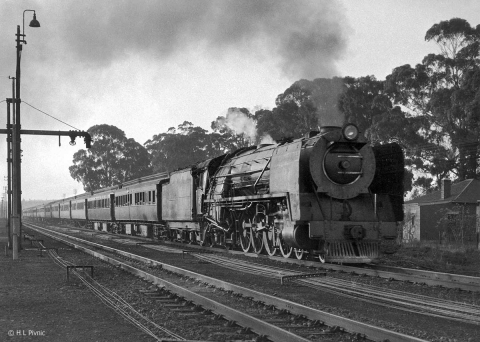
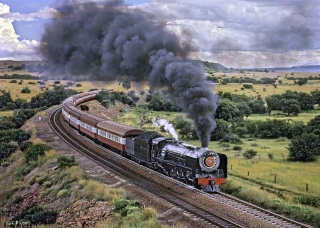
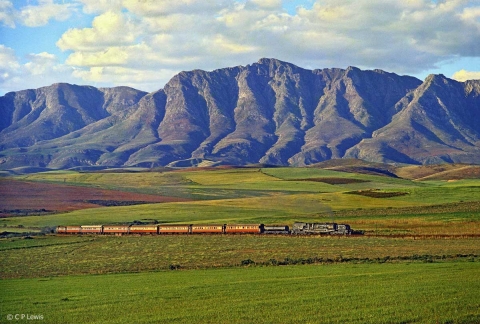


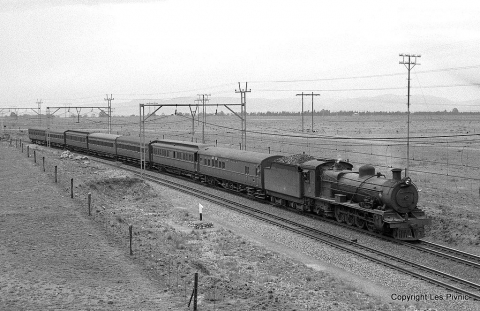














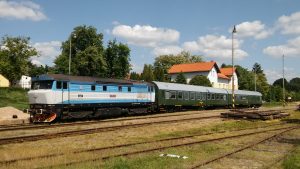









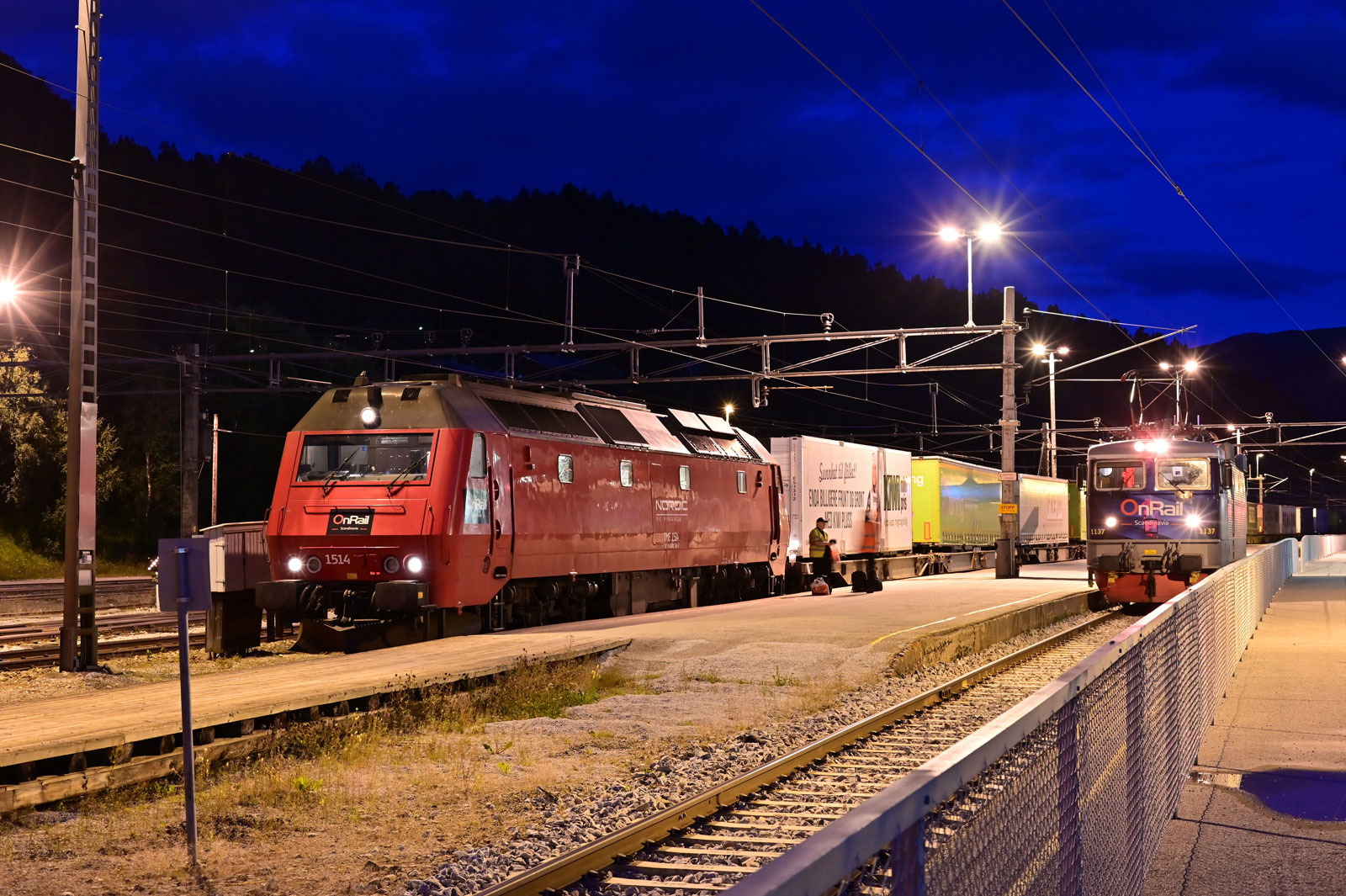








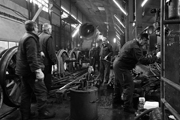
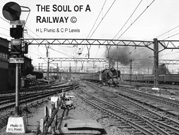






Pingback:Cape Town To Port Elizabeth Train – Juste une autre maison Images Idées